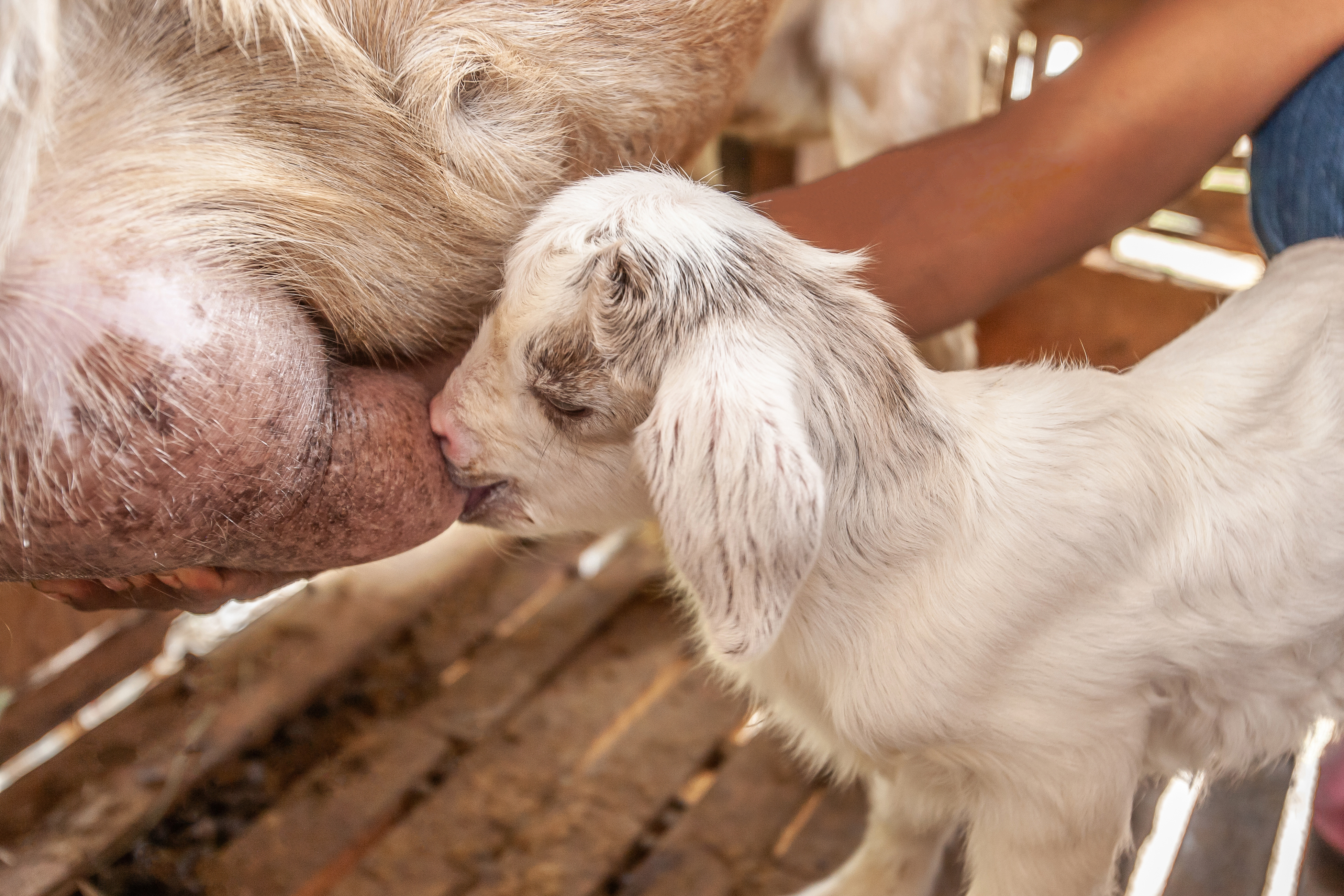
All does develop udders before they give birth or soon after to provide milk for their kids. Understanding the process of when and how a goat develops her udder can add valuable knowledge to any goat owner’s repertoire.
Does begin to develop udders and mature mammary tissue on average six weeks after being bred for the first time. Udders tend to “bag up” or fill with milk three to four days prior to giving birth. This can vary significantly from doe to doe with some first-time mothers developing a large, full bag several months prior to birth to not having any milk come in until days after kidding.
Knowing when your doe develops udders or begins “bagging up” is crucial to understanding goat husbandry and how to care for your goat and kids. Keeping an eye on the lactation timeline is important to watch for any issues that could arise.
What Happens?
When a doe’s udder develops or “bags up” it fills with milk to nourish her young. This usually occurs during pregnancy three to four days before going into labor. Nutrient needs are increased with all lactating mammals and goats are no exception. It is normal for appetite changes to occur when a goat starts lactating.
What Does it Look Like?

Udders change massively in size from prepregnancy to lactation. A goat’s udder will go from the size of a small grapefruit to as big as a beach ball in a matter of days leading up to the birth of her kids. Be gentle with her in this time period because the rapid stretching of tissues can cause tenderness and sensitivity. A good dairy goat can produce up to twenty pounds of milk a day and a significantly larger udder is normal and to be expected.
Color changes are also very normal. Many doelings have light pink or brown udders prior to pregnancy and then darken several shades during udder development. A good dairy goat can produce up to twenty pounds of milk a day and a significantly larger udder is normal and to be excepted.
Fresheners vs Seasoned Does
Fresheners
First-time mothers or “Fresheners” go through a slightly different process to begin lactation than do does who have given birth before. A sexually mature female goat is still missing one aspect that is vital for reproduction- fully mature udders. When a doe is first bred she will begin to ripen and develop mature mammary glands around the sixth week of pregnancy. Her udder will change slightly in this time and appear to swell and may even drop lower to the ground. This is entirely normal and is a signal that her udder is preparing to produce milk.
Udder growth in this time period is gradual and subtle, it may be hard to notice a difference in size right away. The goat will continue to develop mature mammary glands up to five days into nursing the kids.
Fresheners will usually bag up about a week before giving birth but some does go all the way to three or four days prior to birth. Some first time does even have a period after giving birth before they produce milk. All times are normal as it varies from goat to goat.
Seasoned Does
Does that have given birth in the past tend to fill up sooner and have more initial volume because they have nursed kids previously. They can still have slight tenderness with bagging up, but it is much less common than with fresheners. These goats may even have a full bag of milk just a few weeks into pregnancy.
The usual milk-producing cycle lasts about 305 days and ends before another pregnancy begins. A seasoned goat’s udder should have receded after she is finished nursing her previous kids and will return to full size with the subsequent pregnancy.
What To Do If a Doe Is Not Producing Enough Milk

Baby goats need bout 36-48 ounces of milk a day to grow properly. If a doe is not producing enough it could be due to several factors:
- Time since birth. In the first week or so the doe will not produce much milk as her system is building production and her kids’ stomachs are still very small and only require a few ounces. Continue allowing the baby goats to attempt to feed regularly and the constant stimulation should encourage the udder to start producing more milk.
- Lack of nutrients. Lactation is one of the most demanding functions a mammal can have and therefore requires increased nutrient intake. If a doe is not getting enough food she will not produce enough milk. Does should be allowed to eat all the feed that they need without restriction during lactation. A good rule of thumb is to add one pound of grain for every three pounds of milk that she is producing.
- Parasites or health issues. Any pre-existing health conditions or parasites that a goat may have can affect their health and their milk supply. Producing enough good quality milk is the last priority for their bodies and won’t happen unless everything else is working properly. Make sure to have your doe checked by the vet before starting pregnancy and lactation.
Infection and Warning Signs
Goats, like all mammals, can develop mastitus while nursing their young. This condition can range from mild to serious and it is important to know what to watch out for.
Mastitis is an infection in the milk ducts and can be very dangerous if left untreated leading to sepsis which can be fatal to your doe. It is caused by bacteria entering into the udder through the teat. Mastitis is characterized by red, swollen udders that are hot to the touch and may appear to have bruising around the teat. Mastitis is best treated by a vet by administering antibiotics. To prevent this condition make sure the doe and kids are in a clean, dry pen and check her often for signs of infection.
Understanding the process of when and how does develop udders and begin lactation is an extremely beneficial skill in goat husbandry and ownership and is important for keeping happy, healthy goats.

